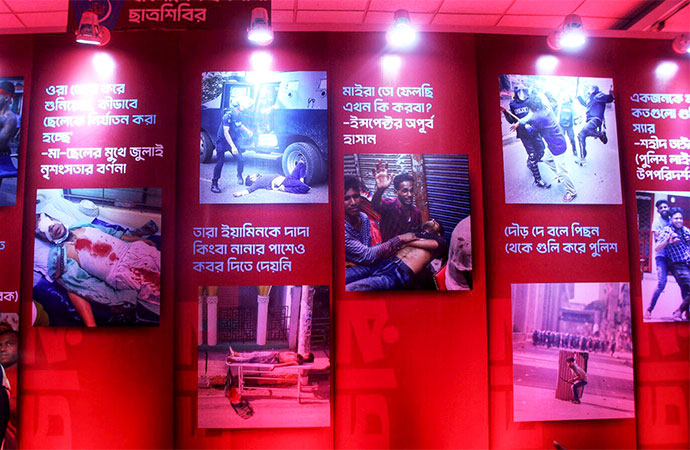Politics

A Ukrainian soldier helps his wounded fellow soldier on the road in the freed territory of the Kharkiv region, Ukraine, Monday, Sept. 12,2022. Ukrainian troops retook a wide swath of territory from Russia on Monday, pushing all the way back to the northeastern border in some places, and claimed to have captured many Russian soldiers as part of a lightning advance that forced Moscow to make a hasty retreat. Photo: AP/UNB
Western instructors don’t understand the kind of war or enemy that we’re fighting, say Ukrainian soldiers
Ukrainian soldiers are being left underprepared for the realities of Russia's war because of a disconnect between NATO and domestic military training, according to one frontline brigade.
So far, more than 60,000 Ukrainian soldiers have taken part in military training in the West.
Yet NATO can only currently offer Ukrainian soldiers basic training, shifting the burden of vital combat training back to Ukraine. Time constraints mean that stage two training doesn't always happen, or happen in full, in Ukraine or the West.
"I don't want to say anything against our partners, but they don't quite understand our situation and how we are fighting," said a senior intelligence sergeant in the newly formed 41st Mechanised Brigade who goes by the name 'Dutchman'. "That's why the main training and the integrated training happens here."
Nick Reynolds, an expert at the Royal United Services Institute (RUSI), a UK defence think tank, said that the West's current training for the Ukrainian military is less realistic, but safer and simpler. He admits that this approach shifts the risk from things going wrong at the training stage to things going wrong during live operations.
"We do have a lot of health and safety regulations... yet this means they are going on to the battlefield less prepared," Reynolds told openDemocracy.
Most of the day-to-day tactics used against Russia's forces, along with combined arms training - where battalions learn to operate together as a brigade - are taught in Ukraine.
"The Western training is good and the guys gain experience, particularly in shooting and [the use of] equipment... but the most useful training is still done in Ukraine," said Dutchman, who joined as a volunteer fighter at the start of the conflict in 2014.
openDemocracy met Dutchman and other members of the 41st Brigade in Kupiansk, a town in north-eastern Ukraine, near one of the most active stretches of the frontline. Almost all the soldiers in the 41st have undergone training in the West.
It usually takes between one and two years to form a brigade, but wartime conditions mean that 90% of the 41st Brigade were mobilised this year. Recruitment started in January and they were dropped into Kupiansk in early July. Before the invasion, basic training for Ukrainian troops was six months, but some of the men openDemocracy met had been mobilised as recently as March, highlighting Ukraine's critical demand for troops.
"It would be better if either [the instructors] came here to see what we're facing or we went there to train their instructors to train our troops," Dutchman added - though he recognises that the former would break NATO's red line of 'no boots on the ground' in Ukraine, while the latter would probably not be acceptable to NATO bureaucracies which require instructors to have risen through the ranks under NATO tutelage.
A different kind of enemy
So far, some 63,000 Ukrainians (17 brigades in total) have been trained in the West, mostly in the UK and Germany.
All receive a 35-day 'boot camp' of basic soldier training. A source involved in the UK training process described it as a "crash course" and the most that could be provided in the time available. They pointed out that a big plus was the thousands of pounds' worth of equipment, including body armour and medical supplies, the Ukrainian troops take home with them.
A key concern about the Western training is that the instructors have never fought a war of this kind, or against an enemy like Russia. For years, Western armies and their defence industries have focused on fighting insurgencies in the Middle East.
Members of the 41st Brigade said that their instructors often used examples of NATO operations in the Middle East, where the objective is to clear houses and identify potential insurgents among the local population, but "that's not really relevant to us".
"For the most part, [Western instructors] have fought wars in cities and towns - urban settings. We are on flat ground a lot of the time," said Dutchman.
The tactics that Ukrainian officers and commanders badly want their troops to learn while being trained abroad are either only part of the syllabus or not featured at all.
"We need people to understand how to effectively clear trenches, enter them, how to throw grenades effectively, how not to trip on booby traps, to understand what grenades the [Russians] throw - essentially to understand the enemy," explained Dutchman.
ura*, one of the newly mobilised soldiers from the 41st, gave the example of minefields. Russian forces have laid extensive minefields - some of which span several kilometres - to hamper the progress of Ukrainian troops involved in the recently launched counter-offensive.
"The [Western] training was good and interesting. But there was very little about de-mining," Yura said. They showed us a minefield about two metres wide. The training lasted about two hours. But you get here and look at what's in front of you, it's just not comparable."
Another major difference, argued Dutchman, who has attended several Western training courses in the UK and Germany, is in planning. Referring to the fact that NATO forces usually outgun (and overpower) their enemies, he said that Western instructors plan "with a weaker enemy in mind".
Ukrainian commanders also have to think on their feet much more, he said. "There's never going to be a warning regarding an offensive... So when the attack happens, we have to make decisions," he said. "[In the West] they make the plan and act according to the plan and when something doesn't go according to plan, they retreat and make another plan."
NATO training regulations
Another issue is NATO regulations on health and safety protection for troops in training.
"The way that we build the pathway [the training stages for troops] is you accredit units as safe at a lower level, and you build up with each layer, getting the safety tick-off... A single death on a training ground in a NATO country is unacceptable," said RUSI's Reynolds.
But Ukraine does not have the time to put its troops through these various levels, which means they can't access additional, more advanced training modules (on particular equipment or the responsibilities of different ranks, for example) that would be useful to them.
Dutchman*, Ukrainian senior intelligence sergeant
The condensed training currently offered to Ukrainian troops makes it difficult to reach a stage where NATO would be comfortable layering on additional training, according to Reynolds.
"I'm not saying one [training approach] is better than the other," he continued.
"From a legal, regulatory, safety and permissions perspective, we can't do [the type of training Ukrainians want], unless we make some fairly serious policy changes."
But Reynolds said he believes there is some scope for changing the training, and that the limits of what the West can offer have not been reached: "Western militaries providing aid need to come around to the realisation of what is required to make collective training work outside Ukraine."
For now, Ukraine's 41st Brigade is acclimatising to what's called the "second" line of defence outside Kupiansk - although they're within comfortable range of Russian artillery and tank fire, they are not as targeted as the "first" or "zero" line. At some point, they will be moved forward to face some of the 50,000 or so Russian troops around the town, who are attempting to draw Ukrainian forces from other areas in the south and east.
Ultimately, said Dutchman, no soldier is properly trained until they are on the battlefield and can think through their reactions.
"However much you prepare someone, they won't understand that they are in a war until they have been shelled... Most of the men here are unshelled," he said.
From openDemocracy

























Leave a Comment
Recent Posts
Showcasing tradition, creative ...
With a commitment to reviving traditional crafts and fostering creativ ...
Gallery Cosmos hosts special s ...
Celebrating a vibrant winter evening of cinematic art and storytelling ...
Logic of interdependence, mutual benefit to keep gui ..
The most important deliverable on the IG’s plate
All 64 people aboard an American Airlines jet were k ..
Tensions between Dhaka University and its seven affi ..